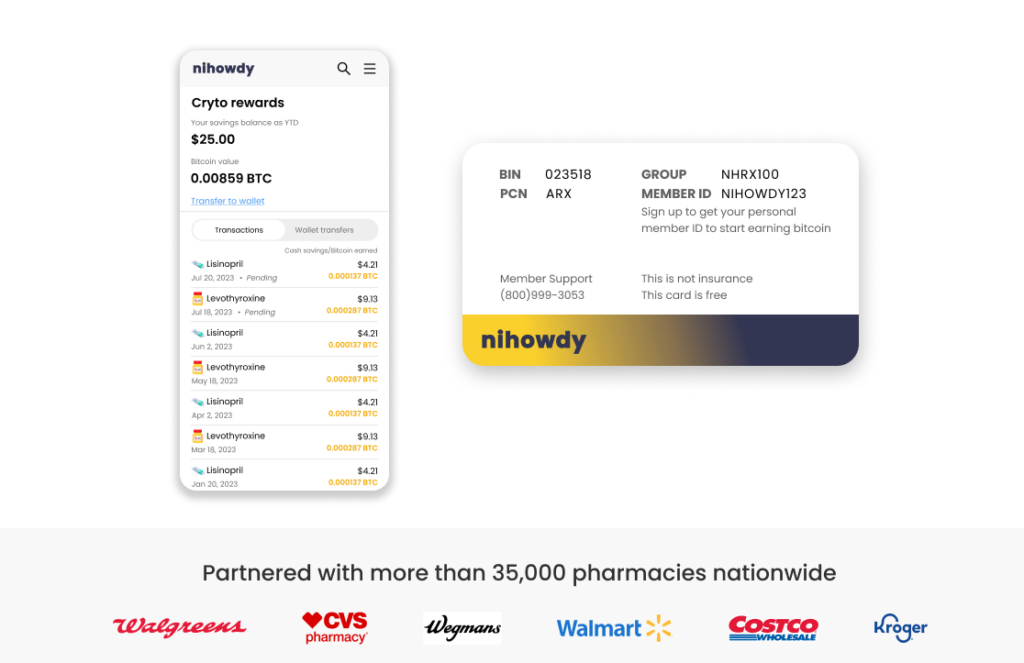Wegovy vs Ozempic: A Comprehensive Guide to Choosing the Right Weight Loss Medication

Deciding between Wegovy and Ozempic can be pivotal for people managing weight or diabetes. In this article, we will discuss “Wegovy vs Ozempic”, comparing both medications and providing you with the necessary information to make an informed decision without overwhelming medical jargon. Both medications offer benefits and have distinct uses, but choosing the right one can be challenging. Expect to learn about their uses, effectiveness, side effects, and more as you navigate the choice for your health journey.
Key Takeaways
Semaglutide, the same active ingredient in both Wegovy and Ozempic, plays a crucial role in weight loss and diabetes management by suppressing appetite, controlling blood sugar levels, and enhancing feelings of fullness. Both medications, approved by the FDA, are administered as once-weekly injections.
Wegovy is primarily used for weight loss in adults and children over the age of 12, whereas Ozempic is specifically designed for adults with Type 2 diabetes, with both drugs administered via weekly subcutaneous injections.
Both Wegovy and Ozempic have a range of potential side effects, particularly gastrointestinal ones, but serious side effects like pancreatitis or thyroid tumors, though rare, also warrant careful consideration and monitoring.
Unveiling Semaglutide: The Shared Component in Wegovy and Ozempic

Semaglutide is a key active ingredient employed in the battle against obesity and Type 2 diabetes, earning high regard among medical professionals. Serving as the shared cornerstone of Wegovy and Ozempics, this potent compound has made significant strides in managing these chronic diseases. As a GLP-1 receptor agonist, semaglutide acts by imitating the body’s natural hormonal response to food intake, which helps lower blood sugar levels and facilitates weight control.
Injections containing semaglutide have been a beacon for individuals wrestling with obesity or Type 2 diabetes for more than ten years, enabling patients to regulate their insulin production more effectively. Semaglutide’s versatility allows it to be administered not only via popular injection methods seen in Wegovy and Ozempic but also through an oral tablet form—demonstrating its role as a benchmark of pharmacological advancement. Additionally, semaglutide is instrumental in chronic weight management, aiming to reduce the risk of cardiovascular events in adults and adolescents who meet specific eligibility criteria based on BMI and weight-related medical conditions.
Understanding Semaglutide’s Mechanism
Understanding the mode of action of semaglutide is like unraveling the intricate ballet of hormones within our body. This active ingredient isn’t merely working in isolation. It interacts with the brain’s centers that regulate appetite, mitigating hunger pangs and lessening the compulsion to eat excessively.
By administering semaglutide injections, one bolsters their body’s ability to produce insulin—a key ally for those contending with Type 2 diabetes—thereby sustaining stability amidst fluctuating blood sugar levels. This mechanism not only aids in managing diabetes but also helps patients lose weight effectively by reducing hunger and improving insulin production.
The Science Behind the Weight Loss
Semaglutide has demonstrated a significant impact on weight loss, not just by curbing appetite, but also by playing the role of an adept conductor coordinating complex signals that converse with parts of the brain in charge of feeling full and content. This is evidenced powerfully in clinical trials where participants have observed remarkable transformations on their scales—achieving as much as 20% reduction in body weight over a period of 68 weeks. They benefited from better mastery over their cravings and hunger, along with enhanced sensations of satiety post-meals when combined with proper diet and exercise.
Semaglutide’s variant known as Wegovy has secured endorsement from the FDA for its contribution to mitigating cardiovascular risk among obese or overweight individuals who are already grappling with pre-existing heart conditions. It’s important to note that using semaglutide-containing drugs like Wegovy can also help patients maintain weight loss over time, emphasizing the necessity of sustained medication and lifestyle adjustments.
Tailored Treatments for Chronic Weight Management: How Wegovy and Ozempic Differ in Purpose

A more detailed look reveals that Ozempic and Wegovy, although originating from the same conceptual framework, diverge in their applications. Wegovy has secured FDA approval for its role in weight loss efforts among adults and is also approved for use by adolescents aged 12 and above. It plays a crucial role in sustained weight management initiatives when paired with a structured regimen of diet and physical activity.
Conversely, Ozempic distinguishes itself as an essential resource exclusively for adult patients contending with Type 2 diabetes. Its specific purpose within this domain offers significant support to those dealing with this condition.
Wegovy’s Role in Weight Management
Thanks to Wegovy, patients dealing with obesity may find a future free from the burden of excess weight. This medication effectively suppresses appetite and enhances satiety, requiring only a once-a-week injection using a pre-filled pen. When integrated into one’s regimen with nutritious eating habits and consistent physical activity, it becomes an instrumental part of their health journey.
As an endorsed treatment strategy, Wegovy has been approved by the FDA as a weight loss drug, ready to assist individuals who are determined to reverse their struggles with obesity.
Treating Diabetes with Ozempic
Ozempic serves a specific function, helping adults with Type 2 diabetes manage their blood sugar. While it’s not the only measure taken, Ozempic complements additional diabetes treatments to enhance control over blood glucose when lifestyle adjustments such as diet and exercise alone aren’t sufficient.
Navigating Dosages and Administration: Wegovy vs. Ozempic
Although Wegovy and Ozempic exhibit distinctive characteristics, they both contain an identical active ingredient that shapes the similarity in their recommended dosing schedules—administered weekly to assist patients on their health journey. These medications distinguish themselves through unique dosages and delivery methods but offer the ease of subcutaneous self-injections, granting patients the autonomy to manage treatment from home.
Patients using Ozempic benefit from additional versatility in managing their regimen: they can administer doses with or without meals and have the option to alter their injection day if necessary, offering a considerable measure of flexibility within their therapeutic routine.
Starting and Maintaining Doses
Starting with a modest weekly dose of 0.25 mg, Ozempic gradually acclimatizes the body to the medication, eventually stepping up to a standard maintenance dose of 0.5 mg as treatment progresses. In contrast, Wegovy commences at an elevated maintenance dose of 2.4 mg per week—surpassing not only Ozempic’s usual maintenance threshold of 1 mg but also providing an optional higher dosage cap at 2 mg for individuals in need of a stronger therapeutic effect.
Delivery Methods Compared

Ozempic and Wegovy stand out for their distinctive administration methods. The Ozempic pens are capable of administering various doses, requiring patients to affix a new single-use needle each time they inject the medication.
Conversely, the Wegovy pen comes pre-fitted with a needle, designed for one-time use only, thus introducing a slightly different experience for patients who use it.
Side by Side: Weighing the Side Effects of Weight Loss Drugs
Embarking on a treatment plan with any medication, including Wegovy and Ozempic, comes with the anticipation of potential adverse reactions. These medications can disrupt the calm of your digestive tract, causing side effects that include:
Nausea
Vomiting
Diarrhea
Stomach pain
It’s worth noting that Wegovy is administered at a higher dosage, which could heighten the severity of these gastrointestinal disturbances, possibly resulting in more serious complications.
Common Reactions to Semaglutide
Semaglutide users may encounter a spectrum of side effects, with some experiencing only minor issues such as nausea, diarrhea, and abdominal pain. Others might suffer from more significant complications like gastroparesis, which dramatically slows the progression of food from the stomach to the small intestine. Additional potential adverse effects include dizziness, fatigue, increased heart rate or discomfort at the site of injection.
Although rarer in occurrence, severe side effects cannot be overlooked. These include pancreatitis and high blood pressure, as well as major adverse cardiovascular events that necessitate immediate attention by healthcare professionals to ensure patient safety.
Addressing Rare but Serious Concerns
Patients must be closely monitored for the rare, but grave side effects of pancreatitis, the risk of thyroid tumors, such as medullary thyroid cancer, and major adverse cardiovascular events including heart attacks, strokes, or cardiovascular death when using semaglutide. Those with a family history of these medical conditions should proceed with particular caution since although infrequent, these complications could significantly overshadow the advantages offered by treatment.
Financial Considerations: Insurance Coverage and Cost-effective Strategies
Commencing therapy with Wegovy or Ozempic brings to the forefront the critical role that financial considerations play, as these medications represent a substantial element of a patient’s medical care expenses. The landscape of insurance coverage for such drugs is diverse and mirrors the varied circumstances of patients—some benefit from extensive insurance plans that alleviate costs, while others experience the strain of bearing out-of-pocket payments.
In this context, NiHowdy serves as a ray of hope by providing access to a prescription discount card designed to lighten the load for individuals lacking sufficient insurance or who are without any coverage at all.
Exploring Insurance Plans and Savings Programs
Navigating the maze of coverage for weight loss medications within employer-sponsored health plans and Affordable Care Act Marketplace health plans can be daunting, given their varying degrees of insurance support. It is critical to carefully examine these options because whether drugs such as Wegovy and Ozempic are covered often depends on the specific design of an insurance plan and the choices made by employers.
Individuals enrolled in Medicare Part D might find that while these prescriptions may be covered when used for managing diabetes, they are usually not insured if prescribed solely for weight loss purposes.
Maximizing Savings with NiHowdy
NiHowdy’s prescription discount card brings considerable advantages, including:
Serving as a reliable ally in managing the costs associated with medication
Easing the burden for individuals dealing with the frequently costly terrain of healthcare
Introducing a Bitcoin rewards scheme that grants up to 3% back on each purchase of prescriptions
Adding an innovative element to savings which has the potential to increase reward values as time progresses
In an era marked by escalating healthcare expenses, these creative measures offer much-needed relief and can assist in balancing other significant financial outlays.
Lifestyle Integration: Beyond Medication for Weight Loss and Diabetes Control

Medication is merely a single element in the intricate network of strategies for weight loss and diabetes control. A robust framework for maintaining health incorporates a combination of consistent physical activity, adherence to a healthy diet, and the complementary use of medication.
In this multifaceted approach towards long-term management of cardiovascular disease, non-drug interventions such as adopting nutritional adjustments and engaging in behavior therapy hold significant importance alongside other lifestyle alterations.
The Role of Diet and Exercise
A combination of diet and physical activity is essential for the long-term control of both weight and diabetes. When used alongside medication, these lifestyle changes become a bedrock, instilling vigor and durability throughout one’s journey towards health. Whether it’s finding an exercise you love or seeking nutritional advice, these aspects are vital for sustained weight loss and holistic treatment of diabetes.
It’s unnecessary to resort to extreme diets or severe measures. Instead, a balanced approach prioritizing controlled portions, emotional intelligence, and optimistic mindset can foster substantial change. This path not only boosts energy levels but also streamlines the intricate process of managing diabetes. Employing proper techniques makes it feasible to treat diabetes effectively while upholding a wholesome way of life.
When Medication Isn’t Enough
In certain cases, despite intense lifestyle modifications and faithful compliance with medication regimens, the desired results in terms of excess weight reduction may remain elusive. Under these circumstances, bariatric surgery emerges as a more radical but possibly transformative approach for achieving weight loss.
Bariatric surgery includes methods such as gastric bypass and sleeve gastrectomy and serves as a ray of hope for those seeking substantial and lasting decreases in weight when previous efforts have not met their objectives.
Alternatives and Complementary Therapies
Managing obesity and diabetes requires an approach tailored to the individual, as each person’s needs can vary significantly. It is important for those who may not find drugs like Wegovy or Ozempic suitable, or are looking for additional options, to investigate a range of alternative and complementary therapies.
Though medication is often a key element in treatment plans, substantial lifestyle alterations such as major dietary changes and enhanced physical activity levels are also critical components when striving for sustained weight loss. Some individuals’ paths may ultimately lead them toward bariatric surgery – a serious commitment that can yield significant impacts on one’s weight and general well-being. Keeping track of body mass index (BMI) serves as an invaluable measure in monitoring advances during the lifelong process of weight management.
Other Medications in the Market
As the healthcare landscape transforms, an expanding array of medications with distinct modes of action is emerging for the control of diabetes. These drugs encompass:
Jardiance
Farxiga
Invokana
Rybelsus
Victoza
Trulicity
Mounjaro
Canagliflozin
Empagliflozin
-Dapagliflozin
-Metformin
These treatments offer new avenues for patients and their healthcare providers to simultaneously tackle weight loss and regulate blood sugar levels, thereby broadening the toolkit for managing this condition.
Non-Medication Options
Numerous options exist for individuals seeking to bypass the use of medication or complement their therapeutic regimen with other approaches. Customized dietary guidance can be sought through nutritional counseling, designed to support personal weight loss objectives. Joining support groups can supply a sense of community and accountability which strengthens commitment to maintaining health and losing weight without exclusive dependence on pharmaceutical interventions.
Summary
As we reach the end of our comprehensive exploration, it’s clear that both Wegovy and Ozempic offer valuable support in the fight against obesity and Type 2 diabetes, albeit with distinct purposes and applications. Understanding dosages, administration, side effects, and financial strategies enhances our ability to make informed choices. Above all, integrating these medications with lifestyle changes and exploring alternative therapies can create a holistic approach to health management. Whether you’re charting a course towards weight loss or navigating the complexities of diabetes, the key is a personalized journey that aligns with your individual health needs and goals.
Frequently Asked Questions
Can I use Wegovy for diabetes management like Ozempic?
No, Wegovy is not to be utilized for diabetes management in the same manner as Ozempic since it has received FDA approval solely for managing weight and not for treating diabetes.
In contrast, Ozempic is tailored exclusively towards the regulation of blood sugar levels in adult individuals diagnosed with Type 2 Diabetes.
How do the side effects of Wegovy and Ozempic compare?
Both Wegovy and Ozempic can cause gastrointestinal adverse reactions, including nausea, vomiting, and diarrhea. Due to its prescription at a higher dosage, wegovy might present an increased risk for serious gastrointestinal complications.
Will my insurance cover the cost of Wegovy or Ozempic?
Insurance coverage for Wegovy and Ozempic varies, so it’s best to consult your insurance provider or explore savings programs to reduce the cost. (Source: NiHowdy, prescription discount card, Bitcoin rewards program).
Can I switch from Ozempic to another diabetes medication if I experience side effects?
Certainly, should Ozempic cause you any adverse reactions, alternative diabetes treatments such as Jardiance, Farxiga, and Invokana are available that function distinctively. Nevertheless, it is essential to seek advice from your healthcare provider before altering your medication regimen.
What should I do if medication alone does not lead to weight loss?
Should weight loss not be achieved through medication alone, considering additional alternatives like bariatric surgery or the adoption of lifestyle modifications such as dietary adjustments and physical activity might prove beneficial.
Consultation with healthcare experts is advisable to ascertain the most suitable approach for your individual circumstances.


